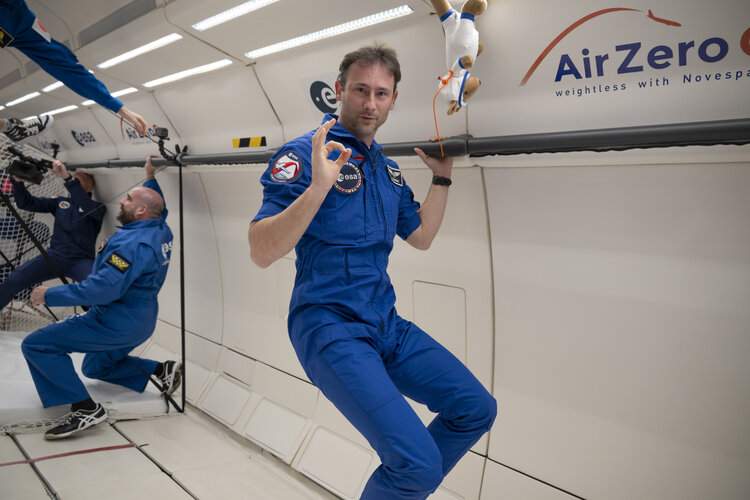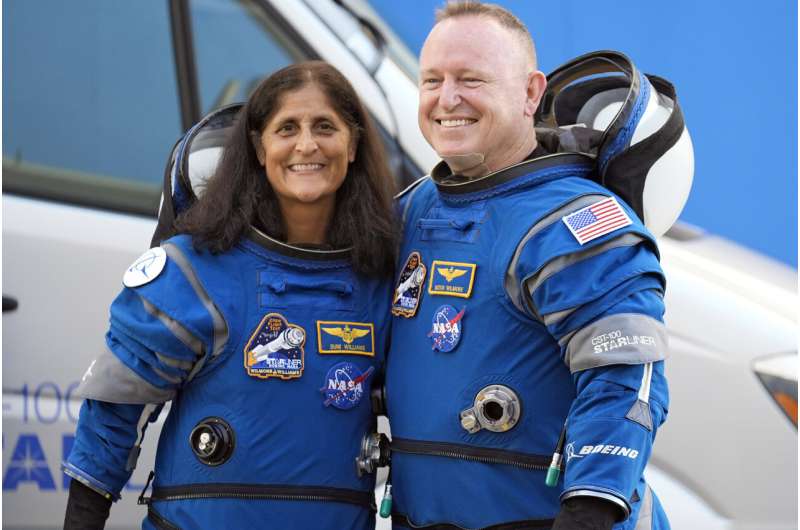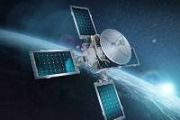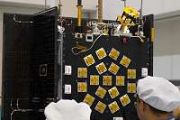
Copernical Team
NASA and USGS find a new way to measure river flows
 A team of scientists and engineers at NASA and the U.S. Geological Survey (USGS) collaborated to see if a small piloted drone, equipped with a specialized payload, could help create detailed maps of how fast water is flowing. Rivers supply fresh water to our communities and farms, provide homes for a variety of creatures, transport people and goods, and generate electricity. But river flows can
A team of scientists and engineers at NASA and the U.S. Geological Survey (USGS) collaborated to see if a small piloted drone, equipped with a specialized payload, could help create detailed maps of how fast water is flowing. Rivers supply fresh water to our communities and farms, provide homes for a variety of creatures, transport people and goods, and generate electricity. But river flows can SFL to build two more microsats for GHGSat's emissions monitoring
 Space Flight Laboratory (SFL) has secured a contract from GHGSat, based in Montreal, to develop two new greenhouse gas monitoring microsatellites, GHGSat-C12 and C13. These satellites will be built on SFL's cost-effective, high-performance 15-kg NEMO bus, the same platform used for the initial nine GHGSat spacecraft.
The announcement was made by SFL at the 2024 Small Satellite Conference,
Space Flight Laboratory (SFL) has secured a contract from GHGSat, based in Montreal, to develop two new greenhouse gas monitoring microsatellites, GHGSat-C12 and C13. These satellites will be built on SFL's cost-effective, high-performance 15-kg NEMO bus, the same platform used for the initial nine GHGSat spacecraft.
The announcement was made by SFL at the 2024 Small Satellite Conference, NASA, LASP sign agreement to advance space weather research, modeling
 NASA's Goddard Space Flight Center in Greenbelt, Maryland, and the Laboratory for Atmospheric and Space Physics (LASP) at the University of Colorado (CU) Boulder enacted a collaborative Space Act Agreement Monday, Aug. 5, 2024, to advance research and modeling in the critical field of space weather.
NASA and LASP are longtime space science and exploration partners, and this formal agreemen
NASA's Goddard Space Flight Center in Greenbelt, Maryland, and the Laboratory for Atmospheric and Space Physics (LASP) at the University of Colorado (CU) Boulder enacted a collaborative Space Act Agreement Monday, Aug. 5, 2024, to advance research and modeling in the critical field of space weather.
NASA and LASP are longtime space science and exploration partners, and this formal agreemen Space Force Endorses Orbit Fab's RAFTI as Standard for Satellite Refueling
 Orbit Fab, a leading provider of in-space refueling services, announced that its RAFTI (Rapidly Attachable Fluid Transfer Interface) refueling port has been approved by the Space Force's Space Systems Command (SSC) as a standard refueling interface for military satellites.
The SSC's System Engineering Review Board (SERB) recommended RAFTI after confirming it meets the necessary technical q
Orbit Fab, a leading provider of in-space refueling services, announced that its RAFTI (Rapidly Attachable Fluid Transfer Interface) refueling port has been approved by the Space Force's Space Systems Command (SSC) as a standard refueling interface for military satellites.
The SSC's System Engineering Review Board (SERB) recommended RAFTI after confirming it meets the necessary technical q Rocket Lab Plans Next Electron Launch Eight Days After Recent Mission
 Rocket Lab USA, Inc. (Nasdaq: RKLB) is set to launch its 52nd Electron mission, deploying a satellite for American space tech firm Capella Space.
Scheduled for a 14-day window starting August 11th, the mission will launch from Rocket Lab Launch Complex 1 on New Zealand's Mahia Peninsula. It aims to place Capella's Acadia-3 synthetic aperture radar (SAR) satellite into a 615km circular orbi
Rocket Lab USA, Inc. (Nasdaq: RKLB) is set to launch its 52nd Electron mission, deploying a satellite for American space tech firm Capella Space.
Scheduled for a 14-day window starting August 11th, the mission will launch from Rocket Lab Launch Complex 1 on New Zealand's Mahia Peninsula. It aims to place Capella's Acadia-3 synthetic aperture radar (SAR) satellite into a 615km circular orbi Week in images: 05-09 August 2024

Week in images: 05-09 August 2024
Discover our week through the lens
Could 2 NASA astronauts be stuck at the space station until next year? Here's what to know

NASA is wrestling over how and when to bring two astronauts back from the International Space Station, after repeatedly delaying their return aboard Boeing's troubled capsule.
Do they take a chance and send them home soon in Boeing's Starliner? Or wait and bring them back next year with SpaceX?
Shenzhou-18 Crew Tests Fire Alarms and Conducts Medical Procedures in Space
 The crew aboard China's Shenzhou-18 spacecraft recently conducted a critical fire alarm test to assess the functionality of the station's fire detection systems across its three modules.
In video footage released by the China Manned Space Agency, the three taikonauts were shown utilizing specialized equipment to activate the station's temperature and smoke sensors. These sensors successful
The crew aboard China's Shenzhou-18 spacecraft recently conducted a critical fire alarm test to assess the functionality of the station's fire detection systems across its three modules.
In video footage released by the China Manned Space Agency, the three taikonauts were shown utilizing specialized equipment to activate the station's temperature and smoke sensors. These sensors successful Astronauts on Tiangong Space Station Complete Fire Safety Drill
 The Shenzhou XVIII crew aboard China's Tiangong space station has successfully completed a series of tasks, including a critical fire alarm test, the China Manned Space Agency reported.
Led by mission commander Senior Colonel Ye Guangfu, alongside Lieutenant Colonel Li Guangsu and Lieutenant Colonel Li Cong, the astronauts tested the space station's fire safety systems by activating temper
The Shenzhou XVIII crew aboard China's Tiangong space station has successfully completed a series of tasks, including a critical fire alarm test, the China Manned Space Agency reported.
Led by mission commander Senior Colonel Ye Guangfu, alongside Lieutenant Colonel Li Guangsu and Lieutenant Colonel Li Cong, the astronauts tested the space station's fire safety systems by activating temper EPC Space Publishes Guide on Optimizing Gate Drive for Rad Hard eGaN Devices
 EPC Space has released a comprehensive application note designed to assist engineers in effectively driving the gate of their Rad Hard eGaN FETs and ICs. This guide provides essential insights and best practices to optimize performance in high-reliability applications.
The document, titled "Driving the Gate of a EPC Space Rad Hard eGaN Device," explores the unique features of EPC's gallium
EPC Space has released a comprehensive application note designed to assist engineers in effectively driving the gate of their Rad Hard eGaN FETs and ICs. This guide provides essential insights and best practices to optimize performance in high-reliability applications.
The document, titled "Driving the Gate of a EPC Space Rad Hard eGaN Device," explores the unique features of EPC's gallium 




























